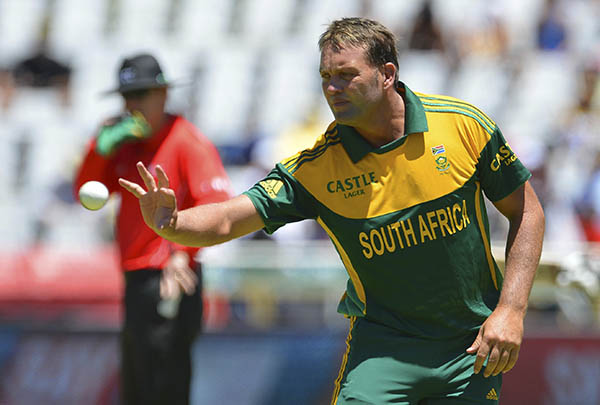Death bowling is a skill that South African players need to master sooner rather than later.
This past weekend witnessed some disappointing results for the Dolphins and the Cobras in their respective Champions League clashes. Both teams had played themselves into winning positions, but both were ultimately undone by some poor bowling and fielding in the latter overs.
I’ve been consistent in my view that limited overs cricket is a batsman’s game. The advent of powerplays, the added penalties for front-foot no-balls, the punishment for straying even a few centimetres the down legside, the short boundaries, the big modern bats … the list goes on. Who would want to be a bowler in the modern age?
Charl Langeveldt has been a fine exponent of death bowling, and I thought he bowled some excellent deliveries in the game against the Hobart Hurricanes on Sunday. Langeveldt mixed some well directed yorkers with the odd bouncer. It’s just a pity that the latter type of delivery was deemed illegal by the umpires. That goes to show how small the margin for error is in this form of cricket.
Unfortunately, the situation is not going to change any time soon. Bowlers need to adapt to the requirement, as a good or poor performance at the death can mean the difference between a team winning or losing.
Nowadays, the best teams are capable of scoring 60 or 70 runs in the final five overs. The bowlers need to ensure that they hit the right areas, and good bowling needs to be backed up by good fielding in the deep.
It’s at the death when you want your best fielders in key positions. Batsmen are usually searching for boundaries during this period, and so a captain needs to deploy his best fielders on the rope. So much is against the fielding side at the death, and the last thing you need is a catch going down.
Dale Steyn, one of the world’s best bowlers, can be counted on to deliver at the death when the Proteas compete at next year’s World Cup. The big question in the buildup to that tournament is who will bowl in tandem with Steyn during that game-defining period.
Jacques Kallis, who recently retired from international cricket, has left a big hole in the ODI side. He rarely bowled 10 overs in the latter part of his career, but the three or four he did contribute, especially at the death of an innings, made a big difference.
Vernon Philander and Morné Morkel both have the potential to play that role, but will need to show some improvement over the next few months. Morkel’s pace and bounce can count against him if he doesn’t get his line right, as batsmen often look for the deflection over the wicketkeeper or behind square. Philander is struggling with form, and has even dropped a yard in pace, but I believe he has all the tools to be an effective death bowler.
It’s important that at least one of these bowlers steps up in the coming months. If the recent games in India have proved anything, it’s that one great death bowler is often not enough to clinch the result. Steyn will need some support when the team travels to the World Cup next February.
Graeme Pollock played 23 Tests for South Africa, scoring 2256 runs at an average (60.97) that remains second only to Don Bradman’s. He was voted South Africa’s Player of the 20th century in 1999, and inducted into the ICC Hall of Fame in 2009.
Due to a series of health problems that have impacted on his financial position, Pollock is now reaching out to fans in hope of some support. If you are able to contribute to his Trust in any way, please do not hesitate to call his agent Basil O’Hagan on 083 4124459 or make a deposit, however small, to the following Trust Fund.
Name of Account Holder: Rudolf Buys & Associates Trust
Name of Bank: Standard Bank
Account Number: 281 464 359
Branch: Fourways Crossing
Branch Code: 009 953
Type of Account: Trust Account
Ref: Mr G Pollock







